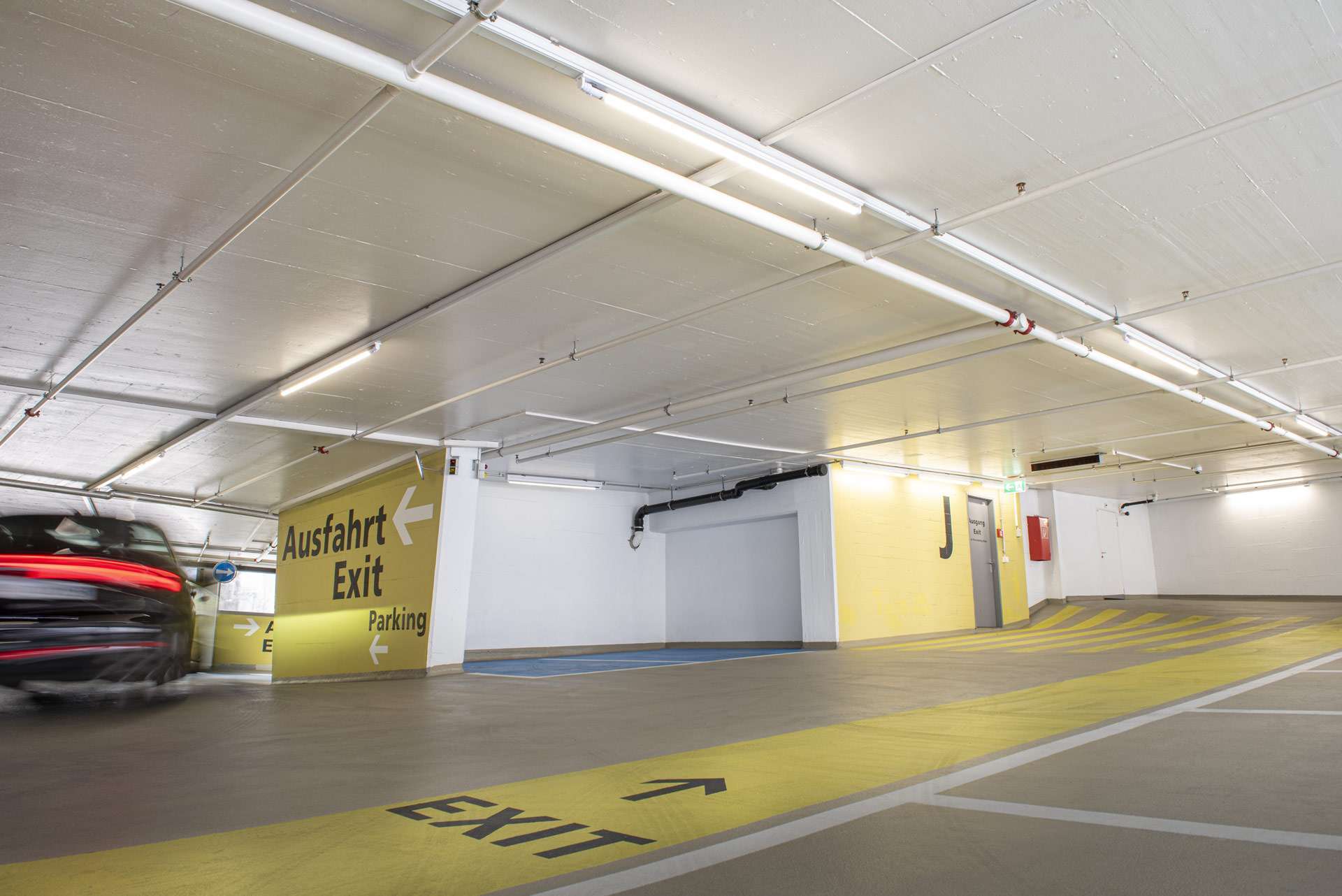
Blog Posts - 02.04.2025

Are you planning to upgrade your lighting? And are you looking for lighting that will enable you to significantly reduce your electricity costs? If you opt for an energy-efficient solution, you can benefit from several advantages at once: Your ongoing energy bills will drop dramatically, you will actively contribute to environmental protection without having to accept any loss of comfort and you can even cover part of the investment costs through subsidies. But how and when do I receive subsidies for my project?
What many people don’t realise is that energy-saving lighting is subsidised by the state – both for indoor and outdoor lighting. Subsidies incentivise people to replace old, power-intensive systems and invest in highly efficient modern technologies. The declared aim of the federal government is to reduce electricity consumption in order to achieve the defined climate targets as soon as possible. But which projects are actually subsidised? In short, whenever high electricity savings are achieved – but the amortisation period is longer than 4 years. In addition, intelligent lighting solutions must be used that use sensors to adjust the light intensity according to demand. The new light sources must have a system efficiency of at least 120 lm/W.
You have made the decision and your project is to be realised. The first step is to apply for subsidies for the new lighting system. Nowadays, there are countless subsidy options for refurbishment measures and new builds. Are you already finding your way through the “subsidy jungle”? ProKilowatt ” – a funding programme of the Swiss Federal Office of Energy – provides guidance on the various funding options and programmes. ProKilowatt supports various efficiency measures that reduce electricity consumption. ProKilowatt can be seen as an “umbrella organisation” for subsidy programmes, which resulted in electricity savings of around 9,000 GWh between 2010 and 2019!
The subsidy contribution, which can amount to up to 30 per cent of the investment measures, not only offers cost savings and a quick return on investment (ROI), but above all also enables a sustainable future. Various areas of application are supported, from ventilation to pumps and lighting. With regard to lighting, you can easily determine whether your project has a chance of receiving funding with a quick check. The decisive factor here is the fixed subsidy contribution. In short: the lower the subsidy and the greater the electricity saving, the more likely you are to receive funding. The most cost-effective products are awarded a subsidy, with a chance of success of around 80 per cent. You can have this tested directly at ProKilowatt and thus obtain an overview of the possible subsidies. Incidentally, it is essential to register for the subsidy programme before the contract is awarded. Completing the specific applications has been greatly simplified in recent times and a simple Excel calculation is usually sufficient. If you don’t want to familiarise yourself with the subject matter yourself, you can often obtain this service directly from your lighting partner. We at LEDCity, for example, take on this work for our customers to make the conversion to modern lighting even easier.
Other exciting sites on the subject of subsidy programmes are the clearly structured Lightbank.ch or the comprehensive and user-friendly Energiefranken.ch site from EKZ. We would also like to make special mention of the two new sector-specific subsidy programmes Opti-Food (for the food industry) and Opti-Town (for public buildings and facilities), which Energie Zukunft Schweiz recently launched. And a little insider tip: We have had very good experiences with the ProImmo programme from Enerprice so far. It’s definitely worth taking a look!
The Swiss Federal Office of Energy (SFOE ) recently announced that there will no longer be fixed submission deadlines for funding applications from 2022. In contrast to the previous three submission deadlines per year, the processes for project funding will be changed to a continuous submission and award decision procedure. In future, this will enable a shorter waiting time between application and award decision. The definitive conditions for the calls for proposals from 2022 will be published at the end of the year.
How might such a retrofit look in concrete terms? A well-known shopping center in Zurich is currently collaborating with our sales team to implement a major upgrade to an intelligent LEDCity lighting system. Beyond reasons of cost savings, sustainability, and the expanded possibilities of smart lighting, the application for subsidies, and notably the COVID-19 emergency measures, also play a crucial role.
The plan is to illuminate corridors, staircases, the parking garage, and storage areas in a demand-oriented manner in the future. To realize this project, the investment costs amount to approximately CHF 400,000. To secure the desired subsidy, an application must be completed. This involves providing details on the luminaire type, annual electricity consumption, use of presence detectors and daylight controllers, and the specific electricity consumption in the before-and-after comparison. If the energy efficiency measure meets the specified requirements, the subsidy will be reserved after successful verification. In the case of this shopping center, around 2500 LEDCity light sources are earmarked for the upgrade. Currently, for example, 330 luminaires have already been upgraded in the shopping center’s staircases, which had no daylight controllers and were responsible for an annual electricity consumption of around 125,000 kWh at 43 watts per luminaire. With the semi-autonomous LEDCity light sources, the values change as follows: maximum power of 19 watts per luminaire, a reduction in annual electricity consumption to approximately 12,000 kWh, and daylight control. This meets the required criteria for sustainable measures.
In total, just under CHF 400,000 of investment costs for parking and staircases, corridors, and storage space can have over CHF 60,000 in subsidies reserved. This also includes the COVID-19 bonus in the form of a subsidy supplement of approximately CHF 14,000, provided the retrofit is implemented by December 31, 2021.
Want to find out more about us?
Get in touch with us!
If you have any questions, please contact [email protected]